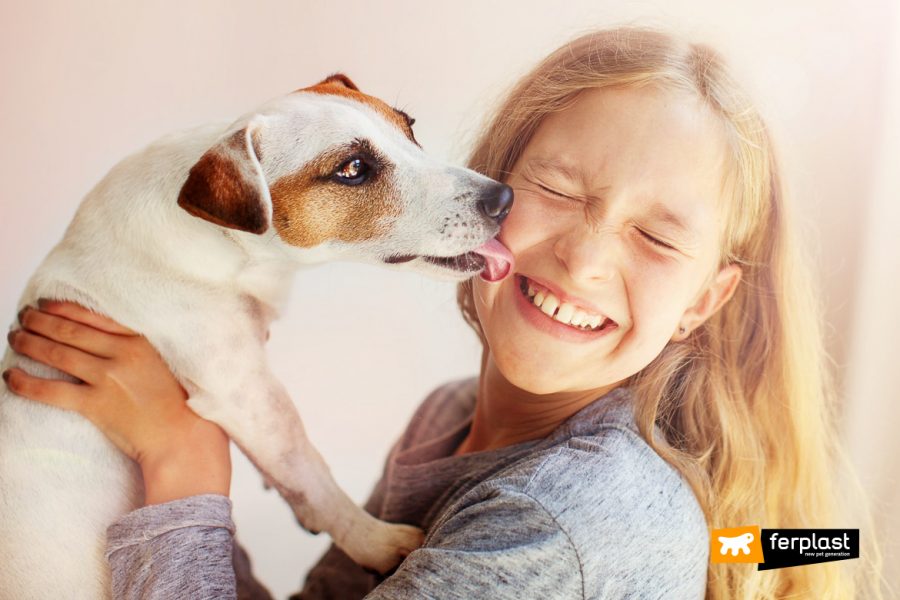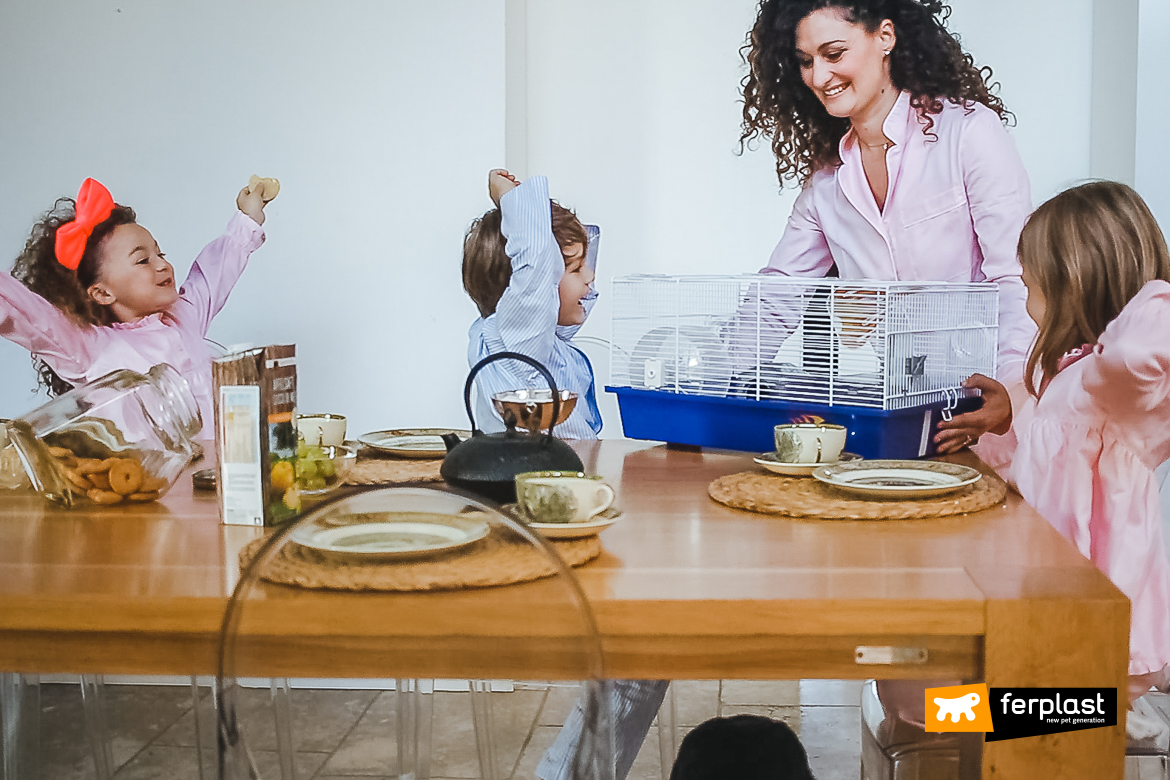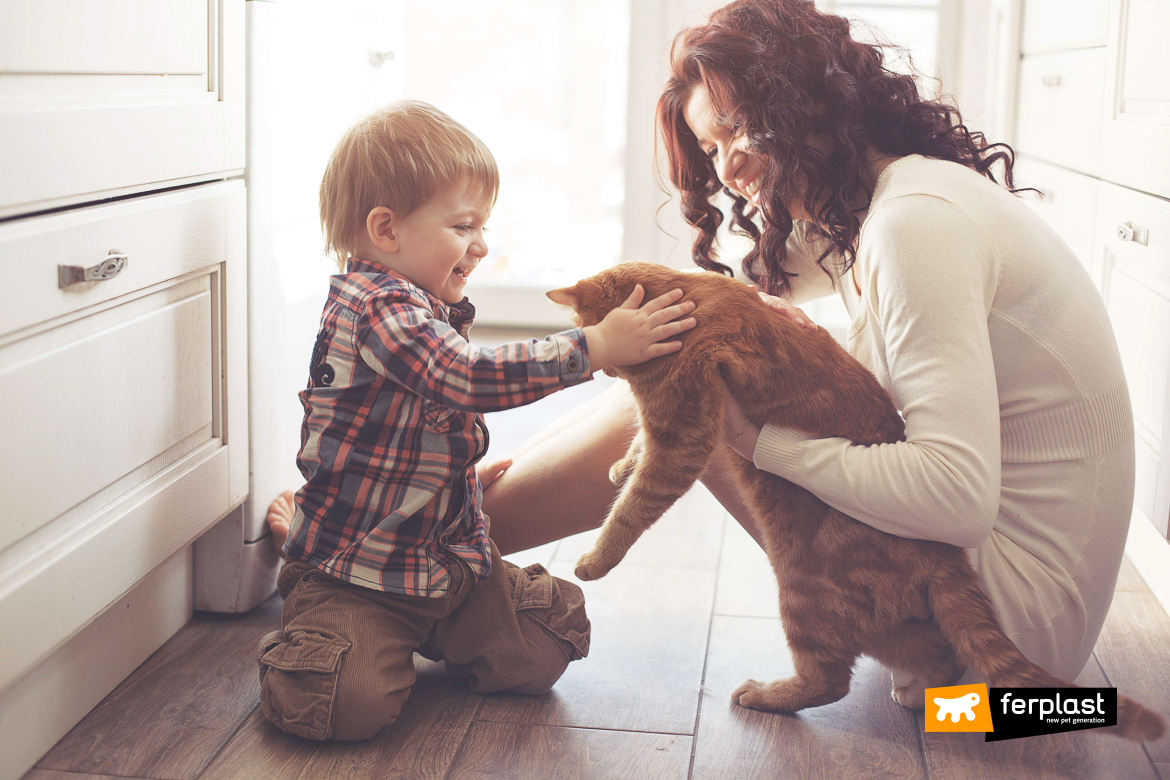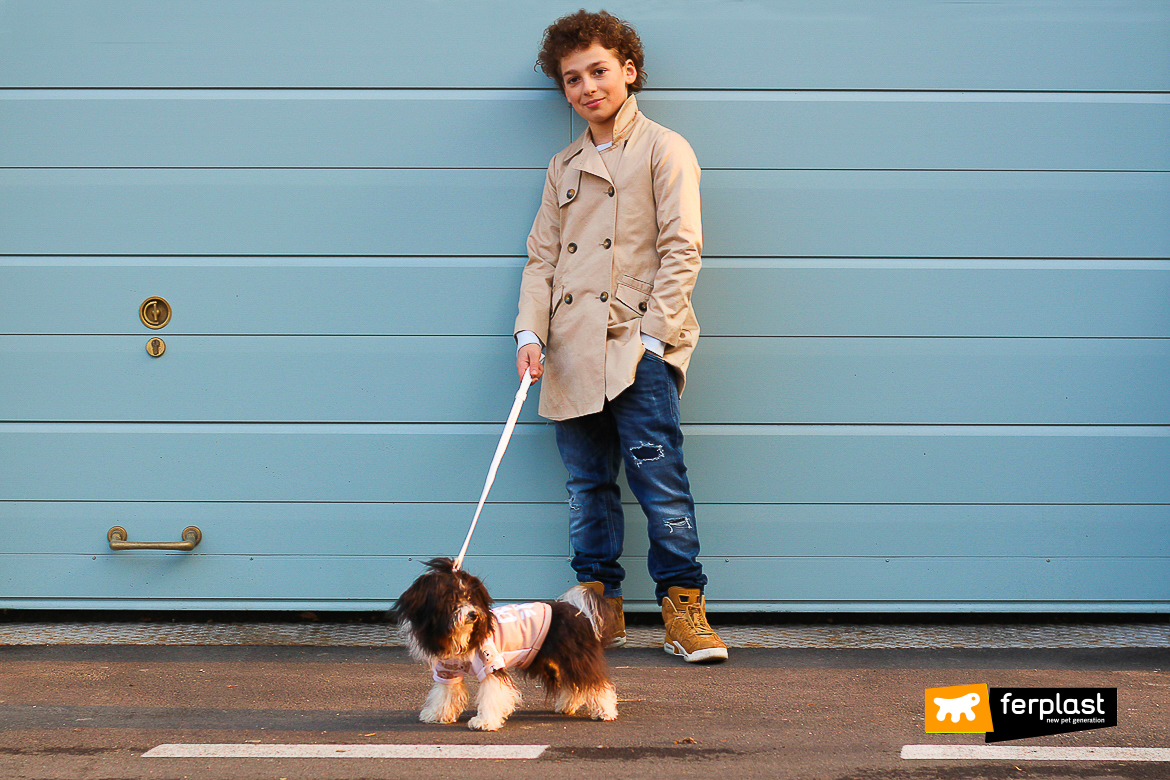Living with a pet, whether it is a dog, a cat, a rabbit or a hamster, is an opportunity for a child to grow considerably and it involves his education. He will learn how to socialize with other animals on the one hand, while on the other he will develop feelings like love, affection and selflessness and will gradually learn how to take care of a living creature.
The plus side of growing up with a pet
Becoming an adult and sharing his life with a pet helps a child to mature much more rapidly and become a better, more tolerant and sensitive person, aware of diversity; a person capable of socializing and respecting the spaces and needs of others. Our furry friends express their unconditional love and loyalty, not with words, but with gestures, and communicate with their eyes and with facts. This is a language that a child will be able to interpret only through deep empathy, a resource that will be useful throughout his life.
Practical tips for teaching your child how to care for a pet
There are a few rules that a parent must put into practice if he wants to make a child aware of the responsibility required in taking care of a pet and it is a parent’s task to educate a child and explain how to relate to a four-legged friend.
1. SET A GOOD EXAMPLE
Children observe a great deal and then copy the behaviour of the people around them. Therefore, if they see mum or dad being affectionate with the dog, taking care to feed him and being punctual in taking Fido out to do his business, children will take for granted that this is the right thing to do. A parent must thus also be an educational model in this way and should never be sulky or moody while getting ready to carry out these tasks.
2. MAKE HIM AWARE OF THE PET’S NEEDS
Parents must tell children about the needs and possible reactions of the pet before allowing them to really begin to handle the furry friend. It takes patience and dedication to make a child understand that when a dog is sleeping he shouldn’t be disturbed or he may react badly, or not to pull the cat’s tail while he is seeing to his claws or eating.
3. GIVE HIM A FEW MINOR TASKS
Involving children is very important. Age doesn’t matter: even if they are very young, it is right that they make some kind of contribution in taking care of the pet. There are a few tasks that even the youngest children can do, such as brushing the dog, putting dry food in the cat’s bowl and then washing it or changing the sand in the hamster cage. At any age, children can take on some responsibility while, from 12 years onwards, they should be able to take care of the pet in complete autonomy. When they are very young, they can sit back and watch, which is nevertheless very educational.
The choice of adopting a four-legged friend should always be made with your heart and your head and it will undoubtedly be a fantastic opportunity for children, who will benefit on both a psychological and an educational level!





